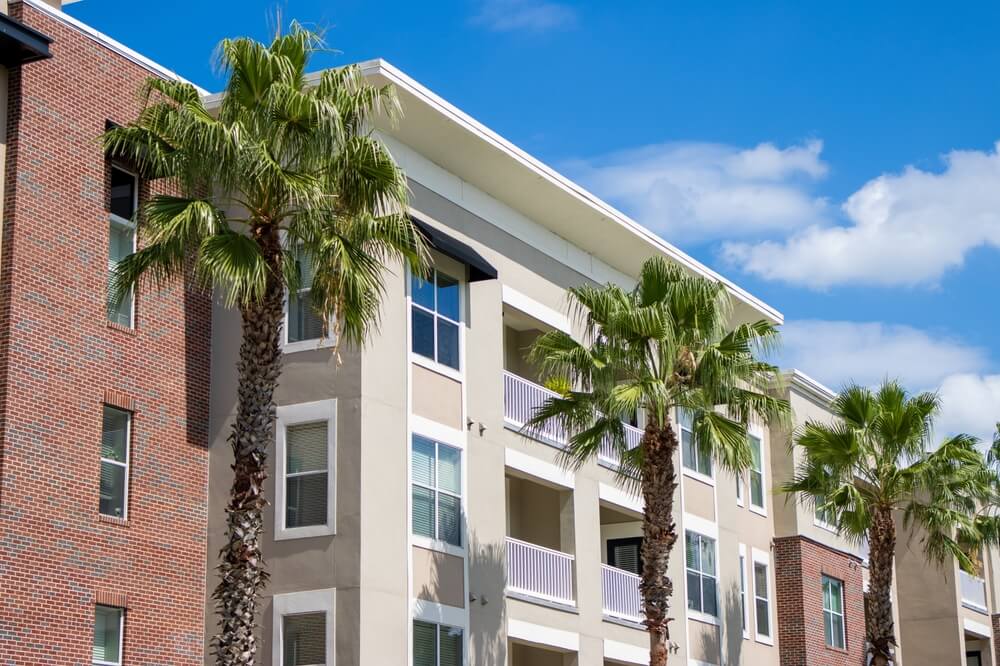
If you are not redirected within 30 seconds, please click here to continue.
Samedi: 10h – 16h HAE

If you are not redirected within 30 seconds, please click here to continue.
If you are not redirected within 30 seconds, please click here to continue.
How to prepare your home for aging in place

Table of Contents
As people grow older and their kids move out, some homeowners choose to downsize and move into a condo or a retirement home. In some cases, they might have to move into an assisted living facility or long-term care home. But others might want to stay and age in place.
Aging in place is the ability for someone to live independently, safely, and comfortably in their own home.
According to a 2022 survey by Ipsos, 95% of Canadians aged 45 and older would prefer to age in place. And 92% would prefer in-home care instead of moving to a long-term care facility. However, 79% say they would only consider moving to a long-term care or assisted living facility if they were unable to pay for in-home care.
Because of the often prohibitive cost of in-home care ($150 to $600 a day) and the unique complexities of growing older, nearly three in ten Canadians aged 85 and older lived in collective dwellings, such as seniors’ residences and long-term care facilities, according to the 2021 census.
The big benefit of living in a collective dwelling is increased social interaction. They typically have daily programs to keep seniors active. Social connections with family, friends, or the community can help support someone’s physical, emotional, and mental health. This is something to keep in mind if you or your parents choose to age in place.
Modifying your home
Successfully aging in place requires more than just in-home care. There are certain home modifications that, according to the needs of the individual, can offer freedom of movement and make everyday life just a little easier.
They can be as simple as adding some grab bars to a tub or installing a taller toilet that’s easier to use. In other cases, more renovations may be required:
Bathroom: Lowering the sink if you use a wheelchair or converting the tub into a shower and adding a shower chair.
Kitchen: Lowering the cabinets or counters to make them more accessible if you use a mobility scooter or wheelchair. Installing slide out shelves makes it easier to reach items.
Flooring: While hardwood floors are nice, they can be a safety hazard. Carpeting as well as non-slip vinyl or cork floors are a good alternative.
Widening doorframes: Many doorframes are 32 inches wide, but 36 inches will give you more clearance if you use a wheelchair or walker.
Ramp or porch/stair lift: In a house, a ramp is ideal for someone using a walker, scooter, or wheelchair. A porch lift will take up less space than a ramp and can be put next to stairs if there’s room. A stair lift is helpful when moving between floors in a multi-story unit. It also reduces the risk of falls.
The cost of these can vary depending on what you choose to do and how extensive the modifications are. A bathroom renovation can be $20,000 to $30,000 while a kitchen reno may cost between $40,000 and $80,000.
A porch lift may cost around $9,000 while a stair lift will be about $4,500 for a straight stairway but up to $12,000 if the stairway is L- or U-shaped because it will have to be customized.
Paying for upgrades
You will likely need to pay out of pocket for some or all renovations. This can come from any savings in a non-registered account, registered retirement savings plan, or registered retirement income fund. For renovations that aren’t as expensive, money from a pension plan, Canada Pension Plan, Old Age Security, or the Guaranteed Income Supplement may cover your costs.
Another option is to find out if you qualify for provincial government support. The province of British Columbia offers a rebate for accessible home adaptations, which helps low-income seniors finance modifications. Eligible homeowners can receive up to $20,000 in the form of rebates.
Ontario residents may be able to get support from the March of Dimes Canada’s home and vehicle modification program (which is funded by the province’s Ministry for Seniors and Accessibility). Those eligible can receive up to $15,000 for home modifications, adaptations, and devices.
Without additional financial support or necessary savings, seniors may be able to leverage their own mortgages to fund these home modifications – namely by getting a home equity line of credit (HELOC) or a reverse mortgage. A HELOC will typically have a lower interest rate than a reverse mortgage rate. If you choose to go with a HELOC, your heirs can choose to hold onto or sell the home. If they keep it, they’ll have to refinance or keep the existing loan. Or they could pay it off in full.
If you opt for a reverse mortgage, the amount owed can increase quickly because of the higher interest rate. That will likely leave your heirs with less. When you pass away, your heirs have the option of selling the property to pay off the loan, paying off the loan in full, or sign a deed in lieu of foreclosure and hand the keys to the lender.
Learn more: What is the difference between a home mortgage and a HELOC?
Informing your insurer
While you don’t have to inform your insurance company of your plans to age in place, you should tell your insurer if you’ll be making renovations in general.
“Your insurance company should be advised that there will be construction on the property as there could be an increased liability exposure,” says Anne Marie Thomas, director of consumer and industry relations at the Insurance Bureau of Canada.
If the improvements increase the value of a home, she adds that the insurer should be advised since the premiums are based on the home’s value.
You should also contact your insurer to find out if there are specific endorsements that are suited for seniors aging in place.
“Each insurance company has their own rules and coverages so it's best to check with the specific insurance company to see if there are any endorsements required,” says Thomas.
Related: Renovations and home insurance: Is your policy enough?
Home sweet home
Aging in place is a great way to live out the latter chapter of one's life with dignity and independence - but doing so requires some effort and planning. If you choose to do so, there are many modifications that can make living at home easier and various options that can help fund those renovations.
Don't waste time calling around for home insurance
Use Rates.ca to shop around and compare multiple quotes at the same time.
Finding the best home insurance coverage has never been so easy!
Get money-saving tips in your inbox.
Stay on top of personal finance tips from our money experts!










